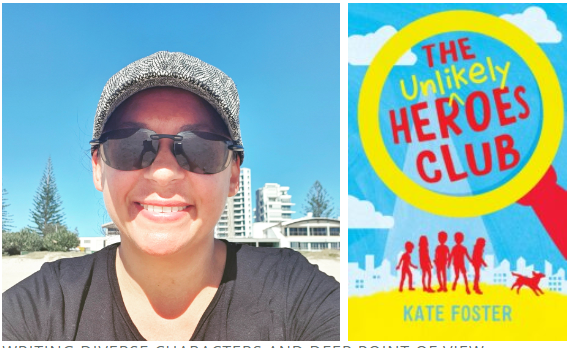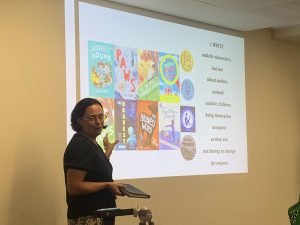
Workshop with Kate Foster – Writing Diverse Characters and Deep Point of View

Diversity, inclusivity and representation are hot topics in children’s literature at the moment, so the Write Links group were very fortunate to have the award-winning Kate Foster speak on this topic at our 3 February 2024 meeting.
I’m not sure how Kate gets everything done, as not only does she write books about autistic characters and raise a family, but she is also a diversity advocate, founder and manager of the Diversity in Australia and Aotearoa New Zealand Children’s Book Award or DANZ Award (created to recognise, award, and celebrate diverse children’s fiction) and she runs both the SCBWI Gold Coast chapter and Author Pen Pals.
Kate’s stories are about autistic characters, but she stressed she does not write about autism. Instead, Kate portrays autistic children being themselves, accepted as they are and not having to change.
Unfortunately, sometimes autistic characters are subject to stereotyping and misrepresentation, which can be damaging and hurtful. So, to help us avoid such traps, Kate’s workshop covered who gets to write about diverse characters, where writers should start, what a writer needs to bear in mind, how to write diverse characters with good representation and whether a sensitivity reader should be engaged (yes, definitely!).

There was a LOT of helpful information and thought-provoking suggestions, but some of the key messages for me included the following:
Think about your reader:
- characters might be fictional, but real people read books, so we need to care about the impact we make on them
- authors are influencers of change, growth and reflection – we’re trusted, responsible and powerful
- think about how your reader might feel when they read your words – you can change what’s on the page, but not the impact your words have on someone
Approach your character and their diversity with respect
- ensure there is a real, genuine, organic reason for a diverse character to appear or star in your book
- if you only describe your character by their diversity, whether intentional or not, you are running the risk of falling into the default that all characters are white and abled
- diversity shapes every aspect of our lives – if you don’t ensure the character’s diversity is clear on the page, then you are not writing an authentic character
- autism is a spectrum and more like a colour wheel rather than a sliding scale.
A huge thanks to Kate for sharing her wisdom, experience and insights. It was both a helpful and engaging workshop and a great way to start our year of meetings.
By Melissa Salisbury



